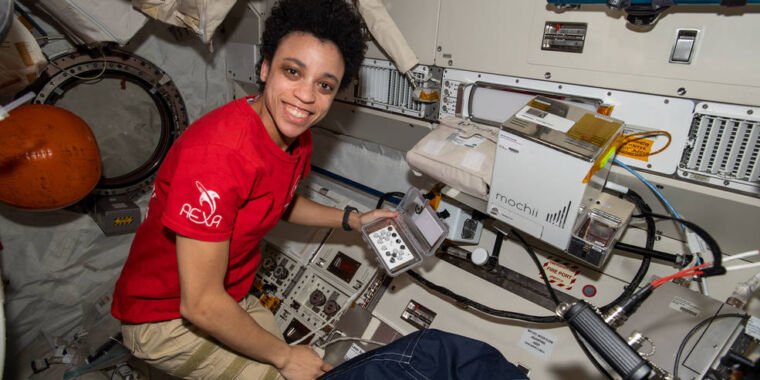“Archeology really is a perspective on material culture we use as evidence to understand how humans adapt to their environment, to the situations they are in, and to each other. There is no place, no time that is out of bounds,” says Justin Walsh, an archeologist at Chapman University who led the first off-world archeological study on board the ISS.
Walsh’s and his team wanted to understand, document, and preserve the heritage of the astronaut culture at one of the first permanent space habitats. “There is this notion about astronauts that they are high achievers, highly intelligent, and highly trained, that they are not like you and me. What we learned is that they are just people, and they want the comforts of home,” Walsh says.
Disposable cameras and garbage
“In 2008, my student in an archeology class raised her hand and said, ‘What about stuff in space, is that heritage?’ I said, ‘Oh my God, I’ve never thought of this before, but yes,’” Walsh says. “Think of Tranquility base—it’s an archeological site. You could go back there, and you could reconstruct not only the specific activities of Neil Armstrong and Buzz Aldrin, but you could understand the engineering culture, the political culture, etc. of the society that created that equipment, sent it to the Moon, and left it there.”
So he conceived the idea of an archeological study on the ISS, wrote a proposal, sent it to NASA, and got rejected. NASA said human sciences were not their priority and not part of their mission. But in 2021, NASA changed its mind.
“They said they had an experiment that could not be done at the scheduled time, so they had to delay it. Also, they changed the crew size from six to seven people,” says Walsh. These opened up some idle time in the astronauts’ schedules, allowing NASA to find space in the schedule for less urgent projects on the station. The agency gave Walsh’s team the go-ahead under the condition that their study could be done with the equipment already present on the ISS.
The outline of Walsh’s research was inspired by and loosely based on the Tucson Garbage Project and the Undocumented Migration Project, two contemporary archeology studies. The first drew conclusions about people’s lives by studying the garbage they threw away. The second documented the experiences of migrants on their way to the US from Mexico.
“Jason De León, who is the principal investigator of this project, gave people in Mexico disposable cameras, and he retrieved those cameras from them when they got to the US. He could observe things they experienced without being there himself. For me, that was a lightbulb moment,” says Walsh.
There were cameras on board the ISS and there was a crew to take pictures with them. To pull off an equivalent of digging a test pit in space, Walsh’s team chose six locations on the station, asked the crew to mark them with squares one meter across, and asked the astronauts to take a picture of each of those squares once a day for 60 days, from January to March 2022.
Building a space shed
In the first paper discussing the study’s results, Walsh’s team covered two out of six chosen locations, dubbed squares 03 and 05. The 03 square was in a maintenance area near the four crew berths where the US crew sleeps. It’s near docking ports for spacecraft coming to the ISS. The square was drawn around a blue board with Velcro patches meant to hold tools and equipment in place.
“All historic photographs of this location published by NASA show somebody working in there—fixing a piece of equipment, doing a science experiment,” says Walsh. But when his team analyzed day-by-day photos of the same spot, the items velcroed to the wall hardly changed in those 60 days. “It was the same set of items over and over again. If there was an activity, it was a scientific experiment. It was supposed to be the maintenance area. So where was the maintenance? And even if it was a science area, where’s the science? It was only happening on 10 percent of days,” Walsh says.
Source link
